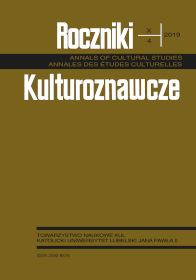Bellows in Malaga: Thomistic Insights via Pablo Picasso
Abstract
The paper begins by clarifying St. Thomas’s teaching on the problem of the one and the many by answering three questions: 1) What is a genus? 2) How are genera organized according to contrary opposition, and what role does virtual quantity play in such organization? 3) How do a knower and the thing known constitute opposite poles of a genus? With these answers firmly in hand, we then turn to an analysis of art, with particular reference to Picasso, with a view to clarifying three complementary points: 1) How the artist and his work constitute a genus, and how the work of art and the viewer constitute a genus; 2) How the work of art affirms the generic relation of sense object and sensate being; 3) How the artist subordinates the practical to the speculative in his work and what this implies for the role of the artist in an increasingly practical age.
References
Aquinas, Thomas. Commentary on the De Trinitate of Boethius. Translated by Fathers of the English Dominican Province. New York: Cosimo, 2007.
Aquinas, Thomas. Summa Theologica. Translated by Fathers of the English Dominican Province. New York: Cosimo, 2007.
Aristotle. Metaphysics. Translated by W.D. Ross. In The Basic Works of Aristotle, edited by Richard McKeon. New York: Random House, 1941.
Dante. The Divine Comedy: Paradiso. Translated by John D. Sinclair. New York: Oxford University Press, 1939.
Gilson, Étienne. Thomist Realism and the Critique of Knowledge. Translated by Mark A. Wauck. San Francisco: Ignatius Press, 1986.
Homer. The Odyssey. Translated by Richmond Lattimore. Chicago: University of Chicago Press, 1965.
Melville, Herman. Moby Dick, Billy Budd, and Other Writings. New York: Penguin Putnam, 1983.
O’Rourke, Fran. Pseudo-Dionysius and the Metaphysics of Aquinas. Notre Dame, IN: University of Notre Dame Press, 2005.
Plato. The Republic. Translated by G.M.A. Grube. In Plato: Complete Works. Indianapolis: Hackett, 1997
Richardson, John. A Life of Picasso: The Prodigy, 1881–1906. New York: Alfred A. Knopf, 2012.





